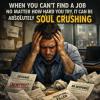
Breaking News
 2025: Living in a Dream World | Time Capsule Film
2025: Living in a Dream World | Time Capsule Film
 The Musical Chairs Economy: When You Can't Find A Job No Matter How Hard You Try,...
The Musical Chairs Economy: When You Can't Find A Job No Matter How Hard You Try,...
 Piers Morgan Just Doesn't Get It...
Piers Morgan Just Doesn't Get It...
 Happening Today: Trump Meeting With US Oil Execs From Exxon, Shell, Others, To Discuss Venezuela
Happening Today: Trump Meeting With US Oil Execs From Exxon, Shell, Others, To Discuss Venezuela
Top Tech News
 World's most powerful hypergravity machine is 1,900X stronger than Earth
World's most powerful hypergravity machine is 1,900X stronger than Earth
 New battery idea gets lots of power out of unusual sulfur chemistry
New battery idea gets lots of power out of unusual sulfur chemistry
 Anti-Aging Drug Regrows Knee Cartilage in Major Breakthrough That Could End Knee Replacements
Anti-Aging Drug Regrows Knee Cartilage in Major Breakthrough That Could End Knee Replacements
 Scientists say recent advances in Quantum Entanglement...
Scientists say recent advances in Quantum Entanglement...
 Solid-State Batteries Are In 'Trailblazer' Mode. What's Holding Them Up?
Solid-State Batteries Are In 'Trailblazer' Mode. What's Holding Them Up?
 US Farmers Began Using Chemical Fertilizer After WW2. Comfrey Is a Natural Super Fertilizer
US Farmers Began Using Chemical Fertilizer After WW2. Comfrey Is a Natural Super Fertilizer
 Kawasaki's four-legged robot-horse vehicle is going into production
Kawasaki's four-legged robot-horse vehicle is going into production
 The First Production All-Solid-State Battery Is Here, And It Promises 5-Minute Charging
The First Production All-Solid-State Battery Is Here, And It Promises 5-Minute Charging
 See inside the tech-topia cities billionaires are betting big on developing...
See inside the tech-topia cities billionaires are betting big on developing...
Room-temperature superconductors could zap us into the future

In the future, wires might cross underneath oceans to effortlessly deliver electricity from one continent to another. Those cables would carry currents from giant wind turbines or power the magnets of levitating high-speed trains.
All these technologies rely on a long-sought wonder of the physics world: superconductivity, a heightened physical property that lets metal carry an electric current without losing any juice.
But superconductivity has only functioned at freezing temperatures that are far too cold for most devices. To make it more useful, scientists have to recreate the same conditions at regular temperatures. And even though physicists have known about superconductivity since 1911, a room-temperature superconductor still evades them, like a mirage in the desert.

 Storage doesn't get much cheaper than this
Storage doesn't get much cheaper than this

